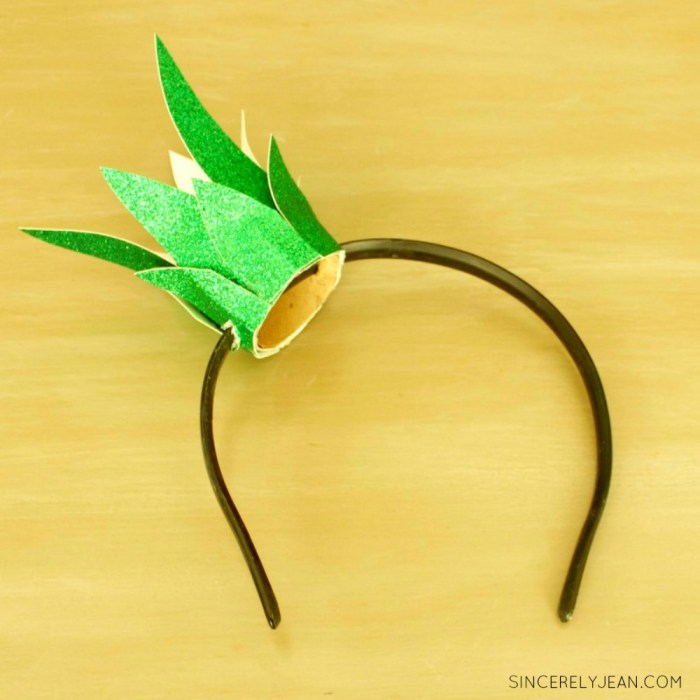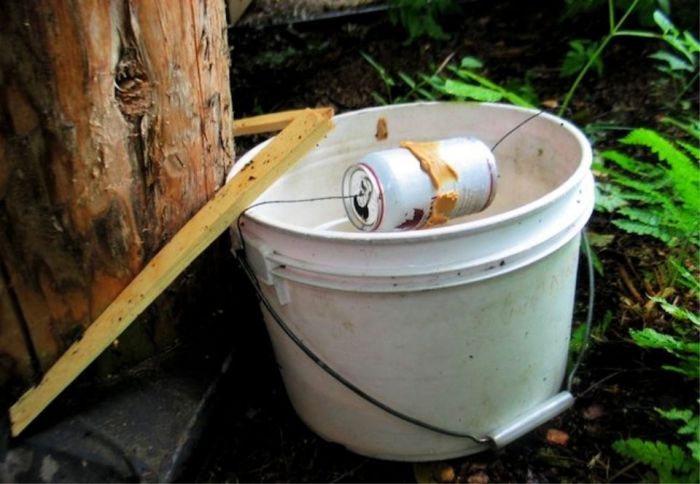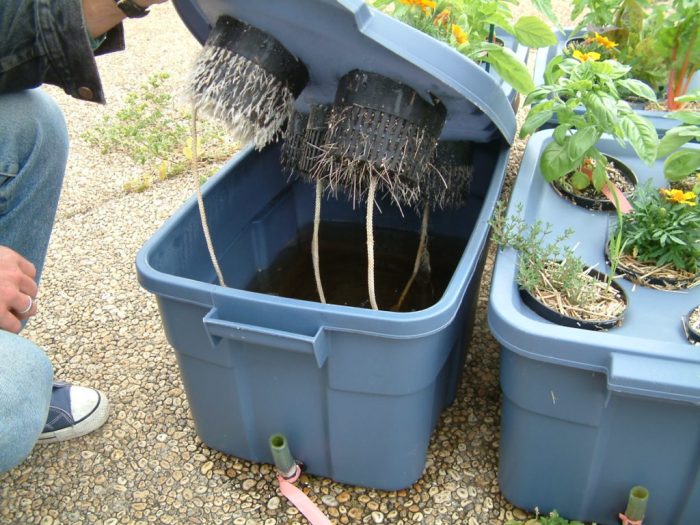
Indoor hydroponic garden DIY offers a revolutionary approach to gardening, allowing you to cultivate fresh produce year-round, regardless of your location or climate. This method, which involves growing plants in nutrient-rich water solutions instead of soil, presents a unique and rewarding experience for both novice and experienced gardeners.
The benefits of indoor hydroponic gardening are numerous, including increased yields, reduced water usage, and greater control over plant growth conditions. By eliminating the need for soil, you can optimize nutrient delivery and minimize the risk of pests and diseases. Furthermore, the compact nature of indoor hydroponic systems allows for efficient space utilization, making it ideal for urban dwellers and those with limited outdoor space.
Introduction to Indoor Hydroponic Gardening
Indoor hydroponic gardening offers a unique and efficient way to grow plants without traditional soil. It’s gaining popularity due to its numerous advantages over conventional gardening methods. This method allows you to cultivate fresh produce year-round, regardless of weather conditions, and offers greater control over plant growth and resource usage.
Principles of Hydroponics
Hydroponics is a method of growing plants in nutrient-rich water solutions without soil. It involves providing plants with the essential nutrients they need to thrive in a controlled environment. The key principles of hydroponics are:
The nutrient solution provides the necessary nutrients for plant growth, while the water acts as a medium for transporting those nutrients to the plant roots.
Plants grown hydroponically receive nutrients directly through their roots, bypassing the need for soil as a medium for nutrient uptake. The nutrient solution is typically a carefully balanced mixture of macro and micronutrients, including nitrogen, phosphorus, potassium, calcium, magnesium, sulfur, iron, manganese, zinc, copper, boron, and molybdenum.
Hydroponic Systems
Various hydroponic systems are available, each with its unique design and advantages. Here are some common types:
- Deep Water Culture (DWC): In this system, plants are suspended in a nutrient-rich water solution. The roots are submerged in the solution, allowing for continuous nutrient uptake. DWC systems are simple to set up and maintain, making them suitable for beginners.
- Nutrient Film Technique (NFT): NFT systems utilize a thin film of nutrient solution that flows continuously over the plant roots. This method ensures constant nutrient availability and promotes rapid growth. NFT systems are often preferred for larger-scale hydroponic operations.
- Ebb and Flow: Ebb and flow systems periodically flood the plant roots with nutrient solution and then allow it to drain away. This method provides a more natural environment for root growth and development.
- Aeroponics: In aeroponic systems, plant roots are suspended in the air and misted with a nutrient solution. This technique allows for maximum oxygen uptake and rapid growth. Aeroponics is a more advanced method and requires more precise control of environmental factors.
DIY Hydroponic Garden Setup: Indoor Hydroponic Garden Diy
Setting up a DIY hydroponic garden is a fun and rewarding experience. It allows you to grow fresh produce year-round, regardless of your climate or space constraints. With a little creativity and some readily available materials, you can create a thriving hydroponic system at home.
Essential Tools and Materials
A hydroponic system relies on a nutrient-rich solution to nourish plants without soil. This section provides a list of essential tools and materials for your DIY hydroponic garden.
- Growing Medium: Hydroponic systems use various growing mediums, such as rockwool, clay pebbles, coconut coir, or expanded clay aggregate (ECA). Each medium has unique properties, affecting drainage, aeration, and nutrient retention. Choose a medium that suits your plants’ needs and your system’s design.
- Containers: You can use various containers, including plastic buckets, grow bags, or even repurposed bottles, for your hydroponic system. Ensure the containers are durable, non-toxic, and have adequate drainage holes.
- Nutrient Solution: Nutrient solutions provide plants with the essential minerals they need to grow. You can purchase pre-mixed nutrient solutions or create your own using specific formulas. Remember to adjust the nutrient concentration based on the plant species and growth stage.
- Pump: A pump circulates the nutrient solution throughout the system, ensuring consistent nutrient delivery to the plants. The pump’s size and power depend on the system’s size and design.
- Air Stone and Air Pump: An air stone and air pump provide oxygen to the nutrient solution, crucial for root health and growth. The air stone releases tiny bubbles, increasing oxygen levels and promoting root development.
- Timer: A timer helps regulate the pump and air pump operation, ensuring optimal conditions for plant growth.
- pH Meter: The pH level of the nutrient solution is crucial for plant growth. A pH meter allows you to monitor and adjust the pH level, ensuring optimal nutrient uptake.
- EC Meter: An EC meter measures the electrical conductivity of the nutrient solution, indicating the concentration of dissolved nutrients. This measurement helps you monitor and adjust the nutrient levels to meet your plants’ needs.
- Seeds or Seedlings: Choose seeds or seedlings suitable for hydroponic growing. Start with easy-to-grow varieties like lettuce, herbs, or tomatoes.
Choosing the Right Location and Environment
The location and environment significantly impact the success of your hydroponic garden. This section discusses key factors to consider when selecting the perfect spot for your system.
- Light: Hydroponic plants require ample light for photosynthesis. Consider using grow lights or placing your system in a well-lit area with at least six hours of direct sunlight daily.
- Temperature: Most plants thrive in temperatures between 65-80°F (18-27°C). Ensure your chosen location maintains a consistent temperature within this range.
- Humidity: Maintaining optimal humidity levels is crucial for healthy plant growth. Hydroponic systems tend to have lower humidity than traditional gardens, so you may need to consider adding a humidifier or misting your plants regularly.
- Ventilation: Proper ventilation is essential for maintaining a healthy environment for your plants. Ensure adequate airflow to prevent the buildup of moisture and disease-causing organisms.
Choosing the Right Plants
Selecting the right plants for your indoor hydroponic garden is crucial for success. Consider factors such as growth habits, water requirements, and nutrient needs to ensure your chosen plants thrive in this unique environment.
Popular and Easy-to-Grow Hydroponic Plants
A wide variety of plants are suitable for hydroponic cultivation, offering options for every gardener. Popular choices include:
- Vegetables: Lettuce, spinach, kale, tomatoes, cucumbers, peppers, and herbs like basil and mint are all great options for hydroponic gardens.
- Herbs: Herbs are generally easy to grow in hydroponic systems, offering a constant supply of fresh flavor for cooking. Popular choices include basil, cilantro, parsley, rosemary, thyme, and mint.
- Flowers: Certain flowers, such as petunias, geraniums, and zinnias, can also be successfully grown hydroponically, adding a splash of color to your indoor garden.
Researching Plant Requirements
Before starting your hydroponic garden, it is essential to research the specific needs of the plants you choose. Information on growth habits, water requirements, nutrient needs, and optimal growing conditions can be found in various resources, including:
- Online Resources: Websites like the University of California Cooperative Extension, the National Gardening Association, and various hydroponic gardening blogs offer valuable information on plant requirements and best practices.
- Books: Numerous books dedicated to hydroponic gardening provide detailed information on plant selection, cultivation techniques, and troubleshooting tips.
- Local Garden Centers: Consult with knowledgeable staff at local garden centers or hydroponic stores for personalized advice on plant selection and care.
Understanding Nutrient Needs
Hydroponic plants rely on nutrient solutions for growth, so understanding their specific requirements is crucial. Different plants have varying nutrient needs, and these can fluctuate depending on the growth stage. For example, leafy greens require higher levels of nitrogen, while flowering plants need more phosphorus and potassium.
Proper nutrient solutions are vital for healthy plant growth in a hydroponic system.
By researching plant requirements and utilizing appropriate nutrient solutions, you can provide your hydroponic garden with the necessary resources for optimal growth and yield.
Indoor hydroponic gardens offer a unique way to grow fresh produce year-round, even in limited spaces. While the process requires some technical know-how, the results can be incredibly rewarding. If you’re looking for a fun DIY project that’s a little less “green thumb” and more “spooky” then maybe you’d be interested in a jack skellington costume diy.
But if you’re dedicated to the idea of an indoor garden, you’ll find that it’s a fascinating and fulfilling way to cultivate your own food.
Hydroponic Nutrient Solutions
Hydroponic nutrient solutions are the lifeblood of your indoor garden. They provide the essential elements that plants need to thrive, replacing the role of soil in traditional gardening. Understanding nutrient solutions is crucial for success in hydroponics, as they directly impact plant health and yield.
Types of Hydroponic Nutrient Solutions
Hydroponic nutrient solutions come in various forms, each with its unique composition and benefits. Choosing the right solution depends on your specific plant needs and growing style.
- Pre-mixed Nutrient Solutions: These are ready-to-use solutions available in liquid or powder form. They offer convenience but may not be as customizable as DIY solutions. Pre-mixed solutions often contain a balanced blend of essential nutrients, making them a good option for beginners.
- DIY Nutrient Solutions: These solutions allow you to create a customized blend tailored to your plant’s specific needs. DIY solutions offer greater control over the nutrient ratios and the opportunity to experiment with different formulas. They require more knowledge and research to ensure proper balance and avoid nutrient deficiencies.
- Organic Nutrient Solutions: These solutions are derived from natural sources like seaweed extracts, fish emulsions, and compost teas. They provide a more natural approach to plant nutrition and can contribute to soil health. Organic solutions may require more frequent adjustments and may not be as readily available as synthetic solutions.
Preparing and Adjusting Nutrient Solutions
Preparing and adjusting nutrient solutions is a critical step in hydroponics. It involves measuring and mixing specific amounts of nutrients to create the ideal solution for your plants.
- Measuring and Mixing: Always use precise measurements to avoid nutrient imbalances. Follow the manufacturer’s instructions for pre-mixed solutions. For DIY solutions, use a reliable source for nutrient formulas and a calibrated scale for precise weighing.
- pH Adjustment: The pH of the nutrient solution is crucial for plant uptake. The ideal pH range for most hydroponic systems is between 5.5 and 6.5. You can adjust the pH using pH up and pH down solutions. Monitor the pH regularly and adjust as needed.
- EC Monitoring: Electrical conductivity (EC) measures the concentration of nutrients in the solution. The optimal EC range varies depending on the plant species and growth stage. Regularly monitor the EC using an EC meter and adjust the solution accordingly.
Lighting and Temperature Control
Light plays a crucial role in hydroponic gardening, as it’s the primary energy source for photosynthesis, the process by which plants convert light into energy for growth. Indoor hydroponic gardens require artificial lighting to mimic the sun’s energy, ensuring optimal plant development.
Types of Grow Lights
Grow lights are specifically designed to provide the necessary light spectrum and intensity for plant growth. Here are some popular types:
- LED Grow Lights: LED lights are energy-efficient and produce minimal heat, making them suitable for indoor environments. They offer a wide spectrum of light and are highly adjustable for different plant needs.
- Fluorescent Grow Lights: Fluorescent lights are a more affordable option compared to LEDs, but they tend to generate more heat and have a shorter lifespan. They are available in different color temperatures, which can be adjusted to suit different plant stages.
- High-Intensity Discharge (HID) Lights: HID lights, such as metal halide and high-pressure sodium lamps, provide high light intensity but generate significant heat. They are often used for large-scale hydroponic setups where high light output is required.
Light Intensity and Duration
The intensity and duration of light exposure significantly impact plant growth. Different plant species have varying light requirements.
- Light Intensity: Measured in units of micromoles per square meter per second (µmol/m²/s), light intensity determines the amount of light energy reaching the plants. The optimal intensity varies depending on the plant species and its growth stage. For example, leafy greens typically require lower light intensity compared to flowering plants.
- Light Duration: The duration of light exposure, known as the photoperiod, influences plant growth and flowering. Most plants require a specific photoperiod to thrive. For example, many vegetables require a 16-hour photoperiod during their vegetative growth phase, while flowering plants might need a 12-hour photoperiod to initiate flowering.
Temperature Control
Maintaining a stable temperature range is crucial for optimal plant growth in hydroponic systems.
- Temperature Range: The ideal temperature range for most hydroponic plants is between 65°F and 80°F (18°C and 27°C). However, some plants may have specific temperature requirements. For instance, tomatoes prefer slightly warmer temperatures, while lettuce thrives in cooler environments.
- Temperature Control Methods: Several methods can be used to maintain optimal temperatures in indoor hydroponic gardens. These include:
- Ventilation: Using fans to circulate air and remove excess heat generated by grow lights.
- Cooling Systems: Employing air conditioners or evaporative coolers to reduce temperatures during hot weather.
- Heating Systems: Using space heaters or heating mats to maintain temperatures during colder periods.
Watering and Monitoring
In hydroponics, the success of your garden hinges on maintaining a precise and consistent watering system. Unlike soil-based gardening, where water can be absorbed and retained, hydroponic plants rely on a constant supply of nutrient-rich water. This section delves into the critical aspects of watering and monitoring in your indoor hydroponic setup.
Water Level Monitoring
Water level monitoring is crucial for maintaining the ideal environment for your plants. The water level should be consistently high enough to submerge the roots but not so high that it drowns them.
- Visual Inspection: Regularly observe the water level in your hydroponic system. If the water level drops below the roots, your plants will start to wilt.
- Float Valves: Install a float valve in your reservoir. This device automatically regulates the water level, ensuring a consistent supply to your plants.
- Water Level Sensors: These sensors are available in various forms and provide accurate readings of the water level. You can set up alerts or alarms to notify you if the water level falls below a certain threshold.
pH and EC Monitoring
The pH and electrical conductivity (EC) of your nutrient solution are crucial factors that directly affect plant growth. Maintaining optimal pH and EC levels is essential for your plants to absorb nutrients efficiently.
- pH Meters: pH meters measure the acidity or alkalinity of the nutrient solution. The ideal pH range for most hydroponic plants is between 5.5 and 6.5. A pH meter will help you identify if the solution is too acidic or too alkaline and allow you to adjust it accordingly.
- EC Meters: EC meters measure the electrical conductivity of the nutrient solution, which indicates the concentration of nutrients. The optimal EC range for most hydroponic plants is between 1.0 and 2.0 mS/cm. An EC meter will help you identify if the nutrient solution is too concentrated or too diluted and allow you to adjust it accordingly.
Addressing Watering and Nutrient Solution Problems
While monitoring your water level, pH, and EC is essential, you may encounter problems that require troubleshooting. Here are some common issues and solutions:
- Wilt or Drooping Leaves: This could indicate a lack of water or a nutrient deficiency. Check the water level and ensure your plants are receiving enough water. Also, review your nutrient solution and ensure it contains the necessary nutrients.
- Yellowing or Discolored Leaves: This could indicate a nutrient deficiency or an imbalance. Test your nutrient solution for pH and EC levels and adjust accordingly.
- Root Rot: This can occur when the roots are constantly submerged in water, leading to oxygen deprivation. Ensure proper aeration in your hydroponic system and avoid overwatering.
- Nutrient Burn: This occurs when the nutrient solution is too concentrated. Use an EC meter to monitor the concentration and adjust the solution accordingly.
Troubleshooting and Maintenance
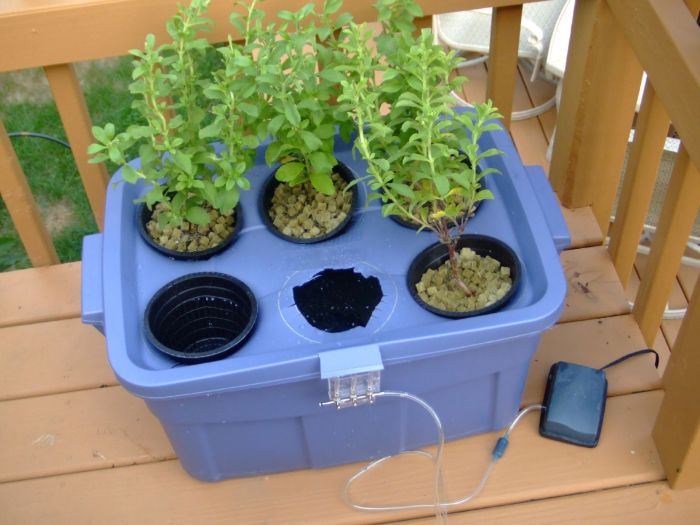
Even the most well-designed hydroponic garden can encounter problems. Knowing how to identify and address common issues is essential for maintaining a healthy and productive system. Routine maintenance is equally important, ensuring your hydroponic system operates efficiently and provides the best growing conditions for your plants.
Common Problems and Solutions, Indoor hydroponic garden diy
Understanding common problems and their solutions is crucial for keeping your hydroponic garden thriving. Here are some of the most frequent issues and how to tackle them:
- Nutrient Deficiencies: Plants may exhibit stunted growth, yellowing leaves, or discoloration if they lack essential nutrients. Regularly monitor the nutrient solution’s pH and EC levels. Adjust these parameters as needed using nutrient additives.
- Nutrient Toxicity: Excessive nutrient levels can also harm plants, causing leaf burn or stunted growth. Regularly test the nutrient solution and adjust the concentration if necessary.
- Root Rot: Overwatering or poor drainage can lead to root rot. Ensure your hydroponic system provides adequate aeration and drainage. If root rot is suspected, remove affected roots and treat the system with a fungicide.
- Pests and Diseases: Hydroponic systems are susceptible to pests and diseases like aphids, whiteflies, and fungal infections. Regularly inspect your plants for signs of infestation or disease.
- Lighting Issues: Inadequate lighting can result in weak growth and stunted plants. Ensure your grow lights provide the appropriate spectrum and intensity for your chosen plants.
- Temperature Fluctuations: Extreme temperatures can negatively impact plant growth. Maintain a stable temperature range suitable for your plants.
Routine Maintenance
Regular maintenance is essential for optimal performance and to prevent problems from arising. Here are some key tasks:
- Cleaning: Regularly clean your hydroponic system, including the reservoir, pumps, and tubing, to prevent the buildup of algae, bacteria, and other contaminants.
- Replacing Parts: Check for worn-out or damaged parts, such as pumps, tubing, and grow lights, and replace them as needed.
- Monitoring Plant Health: Regularly inspect your plants for signs of stress, disease, or nutrient deficiencies.
- Adjusting Nutrient Solution: Monitor the pH and EC levels of your nutrient solution and adjust them as needed.
Seeking Assistance
If you encounter difficulties or have questions, there are several resources available:
- Online Forums: Many online forums and communities dedicated to hydroponics offer support and advice from experienced growers.
- Local Hydroponic Stores: Local hydroponic stores often have knowledgeable staff who can provide guidance and assistance.
- Hydroponic Books and Websites: There are numerous books and websites dedicated to hydroponic gardening, offering valuable information and tips.
Harvesting and Enjoying Your Produce
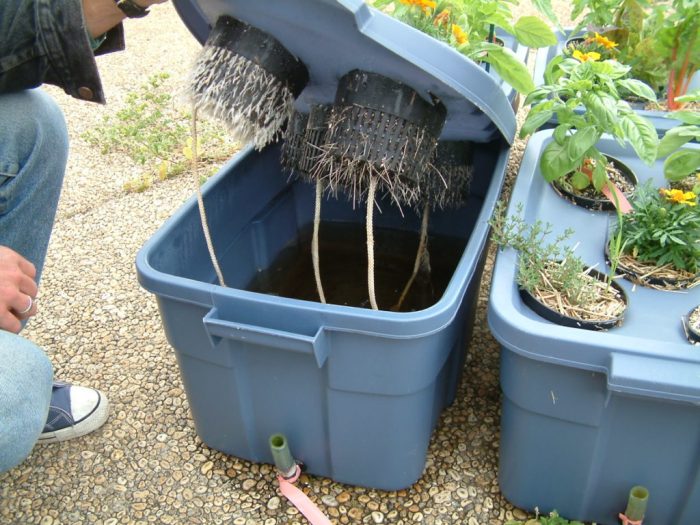
The moment you’ve been waiting for has finally arrived: harvest time! After weeks of nurturing your hydroponic garden, it’s time to reap the rewards of your hard work. But how do you know when your plants are ready to be picked? And how can you ensure that your freshly harvested produce stays fresh and flavorful for as long as possible? Let’s explore these essential aspects of enjoying your hydroponic bounty.
Signs of a Mature Harvest
Knowing when to harvest your hydroponic produce is crucial to maximizing flavor and quality. Each plant species has unique indicators of maturity. Here are some general signs to look for:
- Fruit Size and Color: Fruits like tomatoes, peppers, and cucumbers will reach their optimal size and develop their characteristic color when ripe. Tomatoes will turn red, peppers will change from green to their mature color (red, yellow, orange, etc.), and cucumbers will turn dark green and firm.
- Leaf Appearance: The leaves of many herbs, like basil and cilantro, will start to turn yellow or brown at the edges when they are ready for harvest. This is a natural process indicating the plant is channeling energy into seed production.
- Flowering: For leafy greens like lettuce and spinach, the appearance of flower stalks signals that the leaves are reaching maturity. While you can still harvest the leaves at this stage, they might become slightly bitter.
Harvesting Techniques
Once your plants show signs of maturity, it’s time to harvest them. Here are some techniques to ensure a clean and successful harvest:
- Use Sharp Tools: Use sharp scissors or pruning shears to cut stems and leaves cleanly. This minimizes damage to the plant and reduces the risk of disease.
- Harvest in the Morning: Harvesting in the morning after the dew has evaporated but before the sun gets too intense is ideal. This helps preserve the freshness and flavor of your produce.
- Remove Damaged or Diseased Parts: Discard any damaged or diseased leaves or fruits. This prevents the spread of disease to other plants.
- Leave Some Growth: When harvesting leafy greens, leave a few inches of stem at the base of the plant. This allows the plant to continue growing and producing more leaves.
Storing and Preserving Your Hydroponic Produce
Keeping your freshly harvested produce fresh and flavorful is just as important as growing it. Here are some tips for storage and preservation:
- Refrigerate Properly: Most hydroponically grown produce benefits from refrigeration. Store fruits and vegetables in airtight containers or plastic bags to prevent moisture loss. Avoid storing delicate greens like spinach and lettuce near strong-smelling foods.
- Wash Before Storing: Wash your produce thoroughly in cold water before storing. This removes any dirt or debris and helps extend shelf life.
- Preserve for Longer Storage: For longer storage, consider preserving your produce through methods like freezing, canning, or dehydrating. Freezing is an excellent way to preserve leafy greens, while canning is suitable for fruits and vegetables like tomatoes and pickles. Dehydrating is a great option for herbs and fruits like berries.
Benefits of Fresh, Homegrown Produce
The benefits of enjoying fresh, homegrown produce from your indoor hydroponic garden are numerous:
- Flavor and Nutrition: Hydroponically grown produce is often considered to have superior flavor and nutritional value compared to conventionally grown produce. This is because the plants are grown in a controlled environment with optimal conditions for growth.
- Reduced Exposure to Pesticides: Hydroponic gardens eliminate the need for soil, reducing the risk of exposure to pesticides and herbicides. This makes your produce safer and healthier for consumption.
- Year-Round Availability: Indoor hydroponic gardening allows you to enjoy fresh produce year-round, regardless of the weather conditions outside. This provides a continuous supply of fresh, healthy ingredients for your meals.
- Sustainability: Hydroponic gardening is a sustainable practice that minimizes water waste and reduces the environmental impact of agriculture. You can grow your own food without relying on large-scale farming operations.
Expanding Your Hydroponic Garden
You’ve mastered the basics of indoor hydroponics and are ready to take your garden to the next level. Expanding your hydroponic garden opens up a world of possibilities, allowing you to grow a wider variety of plants and increase your yield.
Advanced Hydroponic Systems
As you progress in hydroponics, you might want to consider more advanced systems that offer greater control and efficiency. These systems are designed to handle larger scales and more complex growing environments.
- Deep Water Culture (DWC): This system uses a large reservoir of nutrient solution with an air pump to provide oxygen to the roots. DWC is known for its simplicity and high yields, making it suitable for larger gardens.
- Nutrient Film Technique (NFT): NFT systems use a thin film of nutrient solution that flows continuously over the plant roots. This technique promotes rapid growth and is particularly effective for leafy greens and herbs.
- Aeroponics: In aeroponic systems, plant roots are suspended in the air and misted with nutrient solution. This technique allows for maximum oxygenation and can result in significantly faster growth rates.
Embarking on your indoor hydroponic garden DIY journey unlocks a world of possibilities. You can cultivate a diverse array of vegetables, herbs, and even flowers, bringing the freshness of nature into your home. With careful planning, meticulous attention to detail, and a touch of creativity, you can transform your living space into a thriving oasis of edible delights. The experience is both rewarding and enriching, offering a sense of accomplishment and the joy of harvesting your own organic produce.

